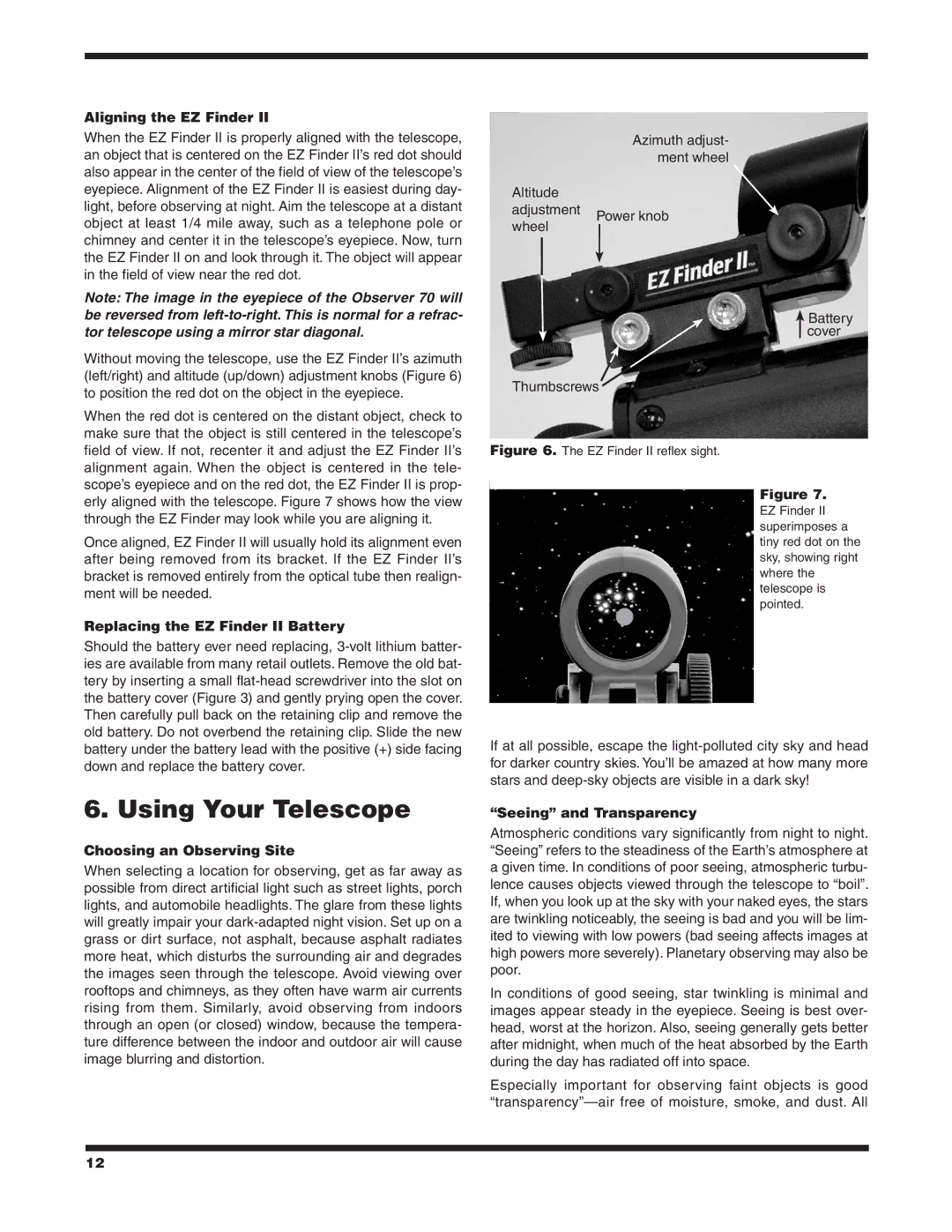70MM AZ specifications
The Orion 70MM AZ telescope is an impressive entry-level telescope designed for stargazers who want to explore the night sky with ease. Ideal for beginners and casual astronomers, the 70MM AZ combines simplicity with the essential features to deliver a satisfying astronomical experience.One of the primary features of the Orion 70MM AZ is its 70mm aperture. This size strikes a perfect balance between portability and light-gathering ability, allowing users to observe celestial objects such as the Moon, planets, and some deep-sky objects. The telescope is equipped with a fully coated glass lens that enhances image brightness and clarity, ensuring that every view of the cosmos is enjoyable.
The telescope's optical design incorporates a refractor system, which is known for producing crisp, sharp images without the need for frequent maintenance. Refracting telescopes are particularly user-friendly because they require minimal collimation compared to reflecting telescopes. As a result, the Orion 70MM AZ is a great choice for novices who may not yet be familiar with telescope maintenance.
A standout feature of the Orion 70MM AZ is its Altazimuth mount. This type of mount allows for intuitive up-and-down and side-to-side movements, making it easy for users to locate and track astronomical objects. The mount is designed for smooth motion and requires minimal setup, so users can spend more time stargazing and less time fumbling with equipment.
Additionally, the Orion 70MM AZ is lightweight and portable, making it easy to transport to dark sky locations. Its user-friendly design means it's perfect for family outings or educational events, allowing users of all ages to experience the wonders of the universe.
To enhance the observing experience, the telescope includes two eyepieces: a 10mm and a 25mm. These provide different magnification options that suit various viewing needs. The inclusion of a finderscope further aids in locating objects in the vastness of space.
In summary, the Orion 70MM AZ telescope is a versatile and accessible option for anyone keen on discovering the universe. With its 70mm aperture, refractor design, Altazimuth mount, and user-friendly features, it stands as a compelling choice for beginners and seasoned astronomers alike. Whether spotting craters on the Moon or viewing distant planets, this telescope offers an engaging way to connect with the beauty of the night sky.

